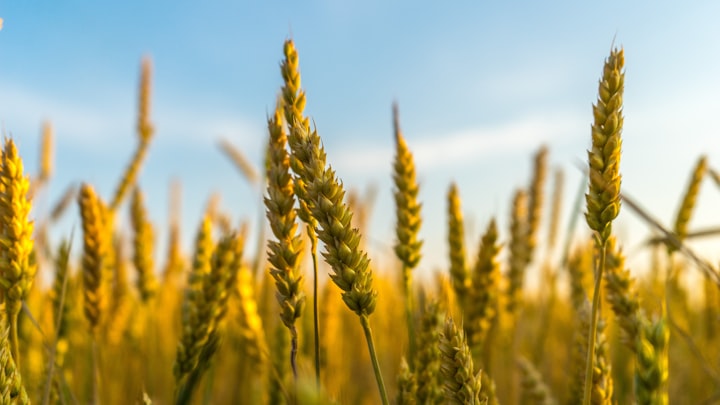Detail explanations on crop Productions as an art and as a science
Agricultural Science

Crop production refers to the process of cultivating plants, specifically crops, for the purpose of obtaining food, fiber, medicinal products, or other useful materials. It involves a series of activities and practices aimed at growing, managing, and harvesting crops efficiently and sustainably. Crop production is a vital component of agriculture and plays a significant role in ensuring food security, economic development, and the livelihoods of farmers worldwide.
The primary objective of crop production is to maximize crop yield while maintaining crop quality and minimizing losses due to pests, diseases, weeds, and environmental factors. It encompasses various stages, including land preparation, seed selection and sowing, crop care and management, and finally, harvesting and post-harvest activities.
Detail explanations on crop Productions as an art and as a science
Crop production can be seen as both an art and a science, as it combines elements of creativity and skill with the application of scientific knowledge. Let us explore each aspect:
Crop Production as an Art:
Crop production involves various artistic elements that require intuition, creativity, and experience. Farmers and agricultural professionals often rely on their senses and practical skills to make informed decisions about crop cultivation. Here are a few ways in which crop production can be considered an art:
a. Selection of Crop Varieties: Farmers use their experience and knowledge of local conditions to select the most suitable crop varieties for their specific region. Factors such as climate, soil type, disease resistance, and market demand are considered when choosing which crops to grow.
b. Crop Arrangement and Design: Planting crops in a visually pleasing and efficient manner is another artistic aspect of crop production. Farmers must consider factors like crop rotation, intercropping, and companion planting to optimize space utilization and maximize yields.
c. Timing and Harvesting: Deciding the optimal time for planting, irrigating, fertilizing, and harvesting crops requires a keen understanding of plant growth and maturity. It involves observing environmental cues, such as temperature, sunlight, and rainfall, as well as gauging the readiness of the crops based on visual indicators.
d. Culinary and Cultural Significance: Artists often explore the cultural, historical, and social relevance of their work. Similarly, farmers may grow crops with cultural significance, heirloom varieties, or traditional crops that preserve local food traditions, thereby celebrating and preserving cultural heritage through agriculture.
Crop Production as a Science:
Crop production also relies heavily on scientific principles and knowledge to achieve desired outcomes and improve agricultural practices. Scientific research and technological advancements play a crucial role in enhancing crop productivity, sustainability, and resilience. Here are a few scientific aspects of crop production:
a. Soil Science: Understanding soil composition, fertility, pH levels, and nutrient availability is essential for optimizing crop growth. Scientific analysis and testing help farmers determine the appropriate soil amendments and fertilizers needed to support healthy plant development.
b. Plant Physiology and Genetics: Studying plant biology and genetics allows scientists and farmers to develop improved crop varieties through breeding programs or genetic engineering. They can manipulate traits such as disease resistance, drought tolerance, or yield potential to enhance crop performance.
c. Pest and Disease Management: Scientific knowledge enables farmers to identify and manage pests and diseases that can damage crops. Integrated Pest Management (IPM) strategies, based on scientific research, help farmers minimize the use of chemicals while effectively protecting crops.
d. Agronomy and Crop Management: Agronomy is the science of crop production, covering areas such as crop rotation, irrigation, fertilization, and weed control. It involves understanding the specific needs of each crop, applying appropriate management techniques, and optimizing resource utilization for sustainable and efficient production.
e. Climate and Environmental Considerations: Given the growing concerns about climate change and environmental sustainability, scientific knowledge is crucial in implementing practices that mitigate climate risks, conserve water resources, reduce greenhouse gas emissions, and promote biodiversity.
In summary, crop production combines the artistic elements of intuition, creativity, and practical skills with the scientific knowledge of plant biology, genetics, agronomy, and environmental factors. Both aspects are essential for successful and sustainable crop production, allowing farmers to maximize yields, optimize resource utilization, and adapt to changing conditions while expressing their creativity in cultivating the land.





Comments
There are no comments for this story
Be the first to respond and start the conversation.